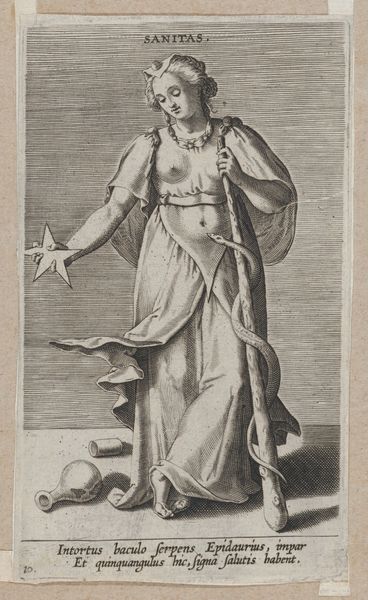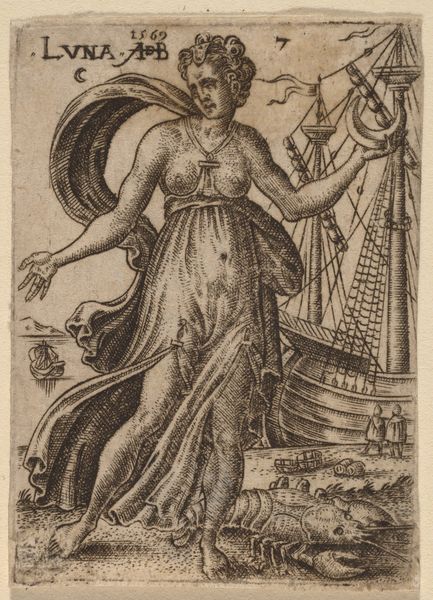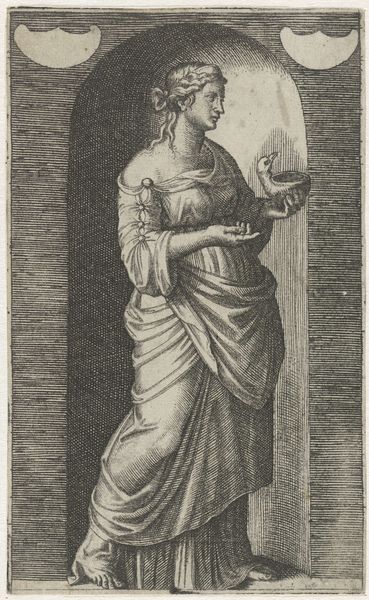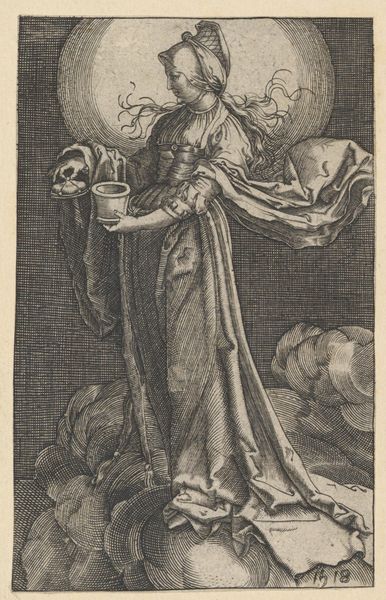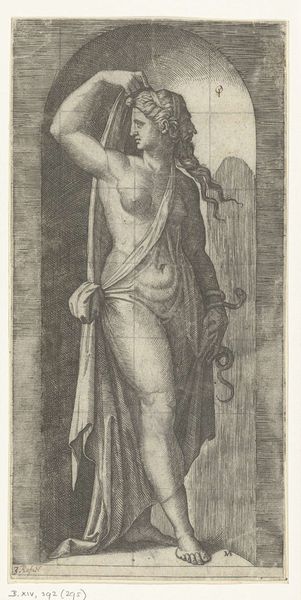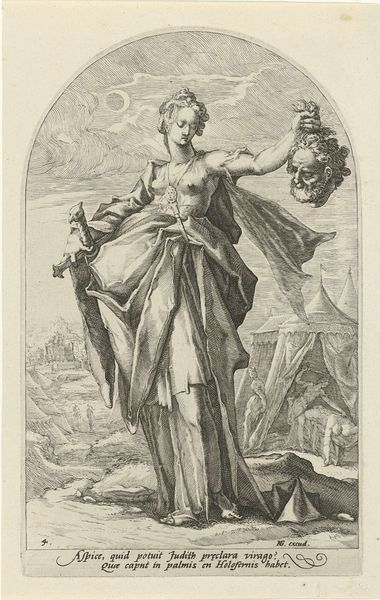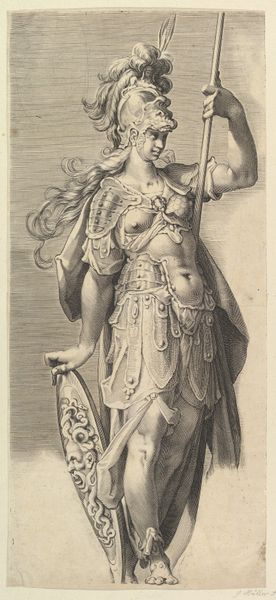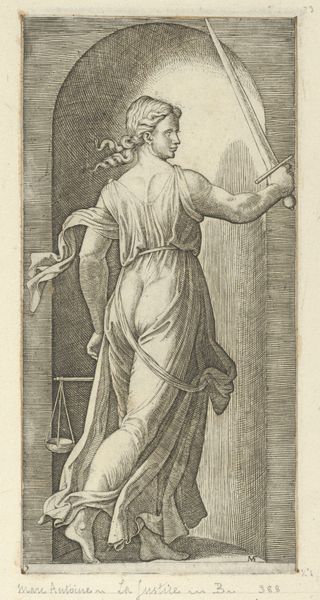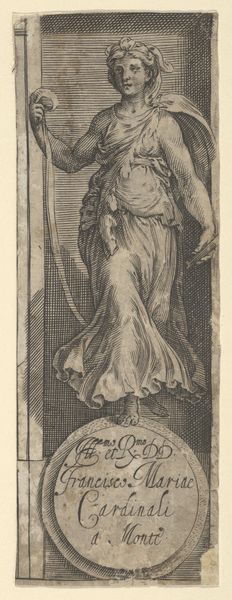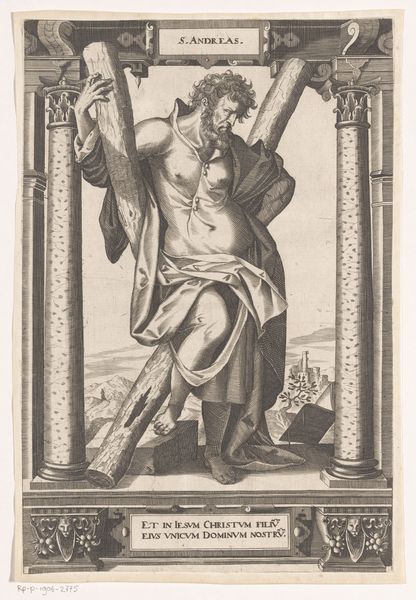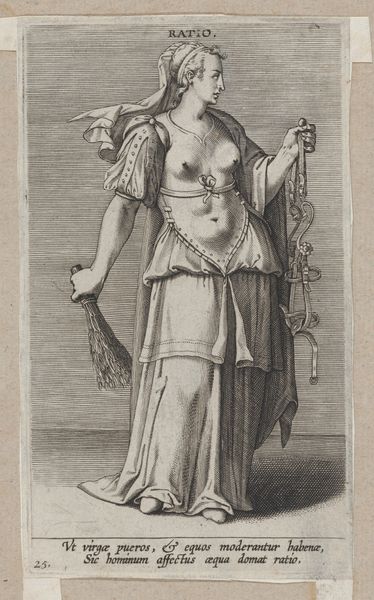
Temperance personfied by a woman standing in a niche holding a bit, from 'The Virtues' 1510 - 1520
0:00
0:00
drawing, print, engraving
#
portrait
#
drawing
#
allegory
# print
#
figuration
#
history-painting
#
italian-renaissance
#
engraving
Dimensions: Plate: 8 5/8 × 4 1/4 in. (21.9 × 10.8 cm) Sheet: 16 1/16 × 10 13/16 in. (40.8 × 27.5 cm)
Copyright: Public Domain
Editor: Here we have "Temperance Personified," an engraving by Marcantonio Raimondi from the early 16th century. The figure’s drapery and contrapposto pose gives her a classical feel. The lighting is dramatic with that dark niche behind her. What do you make of it? Curator: Note how the figure occupies a carefully constructed space. The niche, an architectural element, creates a defined frame around the figure. Observe, also, the rhythmic interplay between light and shadow across her body, the cascade of the drapery which both reveals and conceals. This careful modulation serves not only to describe form, but to establish the spatial relations within the picture plane. Editor: That interplay really does draw your eye through the whole composition. The flowing lines of the fabric really pull you downwards. Curator: Precisely. Furthermore, we must attend to the compositional balance. The figure's gesture, the bit and reins in her hand, they create a diagonal axis that counteracts the verticality of the niche. These visual tensions serve to create a dynamic and engaging composition, no? Editor: Absolutely! And thinking about the reins, it brings us back to the titular allegory. How the image has visual tensions as well as a symbolic one. Curator: Yes! Now, do you see that slight torsion in her body, that weight shift? Note the relationship between that posture and the object she is holding, what that placement implies. The forms enact a kind of visual rhetoric, inviting the viewer to reflect upon temperance, in its control. Editor: Looking at it through that lens brings so much more meaning. I initially overlooked how much the formal elements emphasize the concept. Thank you. Curator: Indeed. Paying attention to the structural elements allows the essence to truly unfold.
Comments
No comments
Be the first to comment and join the conversation on the ultimate creative platform.
